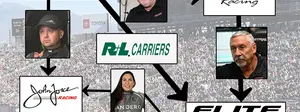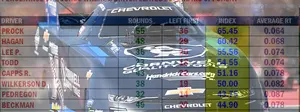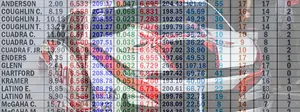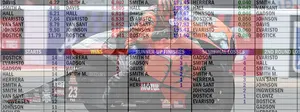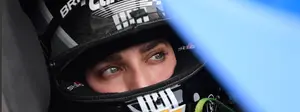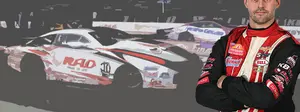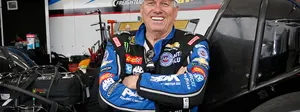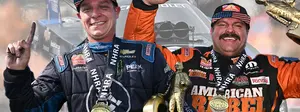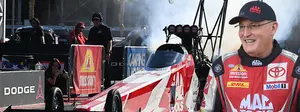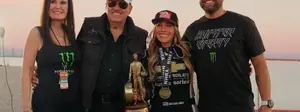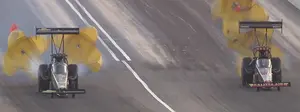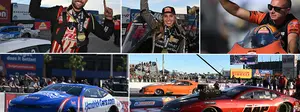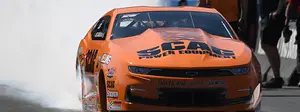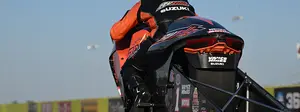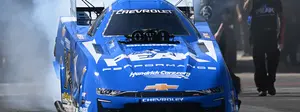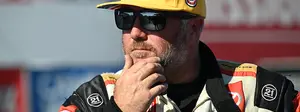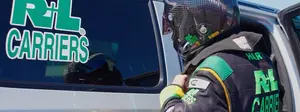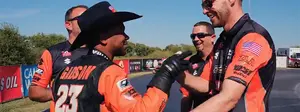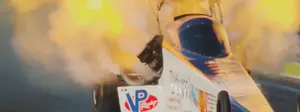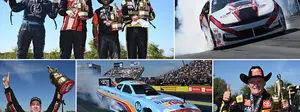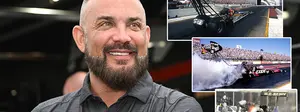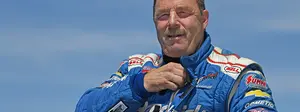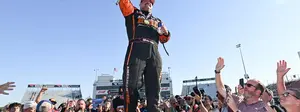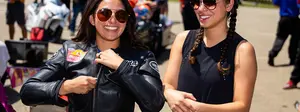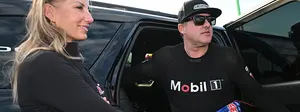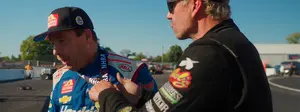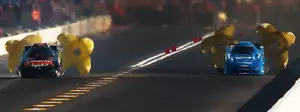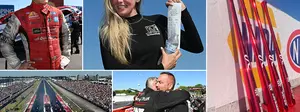

Steve Johnson reflects on his 35 years and nearly 500 races in Pro Stock Motorcycle
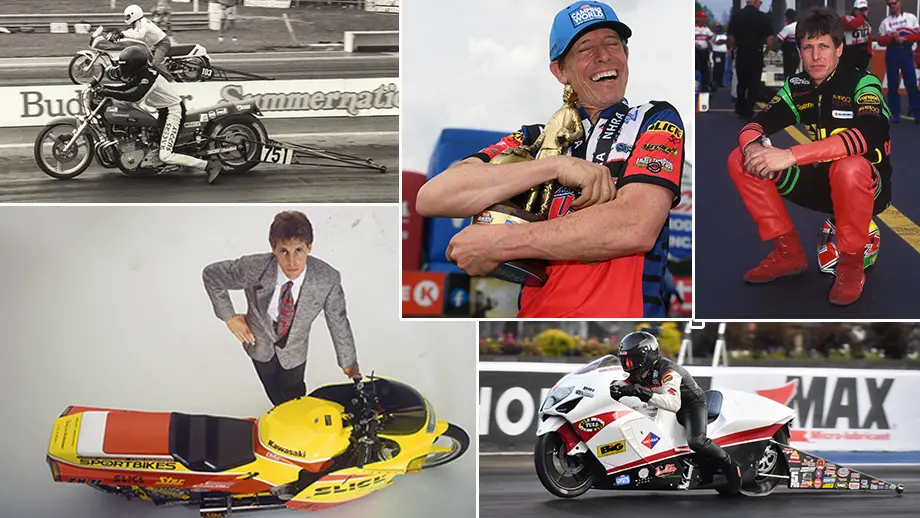
There’s not a lot that’s the same in the 500 races that have passed since the Pro Stock Motorcycle became an NHRA championship class in 1987, but one of the constants has been Steve Johnson, who has missed just 12 races over that 36-year span.
The California native now quartered out of Alabama rode in his 488th race last weekend at the Betway NHRA Carolina Nationals at zMAX Dragway and marveled at how far the class has come. He’s certainly the only rider still around from the 1987 debut in Gainesville, where Terry Vance beat George Bryce for the title, 8.25 at 161 mph to 8.29 at 158 mph.
Vance’s new rider, Gaige Herrera, won the NHRA Carolina Nationals with low e.t. of 6.706 and top speed of 201.94 — a second and a half quicker and 40 mph faster — and the national records sit even quicker and faster, at 6.665 and 205.04 mph.
Johnson missed nine races between 1987 and 1989 and has missed just three races since — all in 2019 — but otherwise has had perfect attendance and a front-row seat to see all of the changes in the class.

“There's so many different changes,” Johnson said. “Clearly, the motorcycles go faster, and they don't go faster without technology and evolution of riding styles."
Riding style: “Today, we all leave on a rev limiter; back when I started, we would roll the throttle on and let the clutch go, and we tried to slip if we knew anything about slipping. Just the technique of riding, sitting down and popping the clutch back then versus leaning over like many do today. Back then, we launched at 13,000, and today, it’s 14,000, and there's a big difference between 13 and 14 in my eyes.”
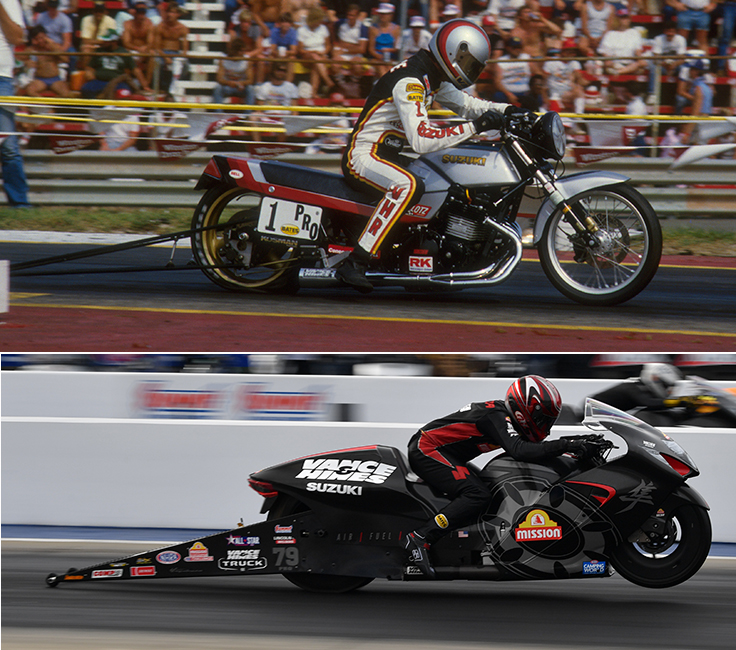
The riders: “Today, they’re all like horse jockeys, as small and light as you can be. Most of the riders are in the 130s and 140s. If you’re much over 150 pounds, you’ve got a problem, but I remember back in the early days it wasn’t uncommon for some of the riders to weigh 200 pounds. I’m probably the tallest order out there. So, I eat a lot of broccoli.”
Performance: “I remember Terry Vance going 7.99 and Dallas [in 1987], and it’s like, ‘Wow, how fast is that?!' Now, that’s a for-sure DNQ.”
Tires: “The tires are just night and day. We used to run a Goodyear. It was super lightweight, and there was nothing better on the planet. And then one guy didn't have one, and he bought a tire from Mickey Thompson and went out there and went 1.10 to 60 feet, so then we all put it on.”
Transmissions: “Back then we had five-speed automatic, override transmissions. Now we have six-speed transmissions.”
Induction: “The technology in the carburetors and now obviously fuel injection has changed so much. One of the coolest words in the pits back then was ‘cone carbs.’ Byron [Hines] made these special smooth-bore carburetors out of Macunis, and they had a cone, and it was all billet, and this is before most of us even knew what CNC stood for. And everybody had to buy them, and they were thousands of dollars, and then all of a sudden Lectron came around and just smoked them all. I think Vance and Hines still ran their carburetors, but if you were anybody and everybody — George Bryce and John Myers, they had Lectrons — and nobody looked back after that. You literally take them out of the box, bolt them on, and your motorcycle was a rocket ship. And no jetting; they didn't have it. They had little tiny power jets. Today, the 60-foot [times] are 1.03 and even 1.02; back then, man, if you 1.09, you were a rocket ship."

Bodies: “We didn’t really have them back then. Now, we have a $35,000 carbon fiber Hayabusa body. Back then, the gas tanks actually had gas in them. Today, they’re there for looks. A lot of us use the frame rails for a fuel tank, and we use a different frame rail for the compressed air for the air shifter."
Chassis: ”When I started, the cradle that holds the engine was always completely stock, and we'd just put a bolt on a swing arm back there.”
What it took to win: “Most people have dynos now, and the workload has changed at the track. Back in the old days, people would ask me about the track, and I’d say, ‘I don't know much about the track, but I knew everything about the shrimp cocktail in the Winston suite.’ I knew where the drinks were, and I knew where the free food was. Now, it’s just a constant battle, like in any class.”

Facilities: “I think the competitors have changed now. Vance & Hines and George Bryce with Star Racing, they were very, very competitive and even a little the offspring of that, but now every single person is all-in. A lot of us have facilities. Ryan Oehler is all-in with his program. We have a standalone shop. Matt Smith, standalone; obviously Vance & Hines. There's a lot of standalone shops that don't work on anything but NHRA Pro Stock Motorcycle racing, so that says a lot.”
Makes: “Today, it’s just Suzukis and the V-Twins. Back then we had Suzukis, of course, but Byron had a Honda and then his FJ 1100 Yamaha, and, of course, Dave [Schultz] had his killer Kawasaki.”
Complaining: “I'll tell you something that's still the same. It's the pissing and moaning about what engine combinations is the best and how to negotiate with the sanctioning body to get the rules changed in your favor.”
Johnson has a dozen Wallys to show for his efforts, including one earlier this season in Bristol and two at the prestigious NHRA U.S. Nationals, including his controversial win in 2005 when final-round opponent Matt Smith initially was given the win and the trophy because the finish-line photocell beams caught Johnson’s fairing and not his front tire.

“I just figured I’d lost the round, but the TV people came to me and asked me to come to the truck, and they showed me the finish-line camera, and I was clearly ahead,” he remembers. “I could completely see, and I'm like, ‘Huh.’ My crew chief stormed out of there, but I was ready to just accept it because George Bryce had always told me that the rulebook said it was the rider’s responsibility for the motorcycle to be recognized by the timing system, and I didn’t have any wheel discs or anything on my front wheel.
“I remember thinking at the time that [Hurricane] Katrina had just hit, and there’s people in Florida, Alabama, and Mississippi without water, and what did I have to complain about?
“My whole dream had been to be in the winner's circle at Indy, but I really felt like, ‘Man, so many people are in so much peril right now, and I'm going to complain about a trophy?’ It wasn't worth it. I was really done and over with it, and then over the next few days, I got call from NHRA, and they reversed it, and then NHRA made the rules about front wheels and the timing system got updated, all because of me.

“So, I had the most controversial race in history? But at the same time, I also had the first three races that I won, I only got to go to winner's circle once. My first win, in St. Louis in 2004, that was the race where Darrell Russell was killed, so no one had a winner’s circle, and then I didn’t really get an Indy winner’s circle the next year."
As Johnson races through his 35th season in NHRA competition, he says there’s no end in sight.
“My goal always was to win a championship so then I can get married and have kids and have a picket fence,” he said, only half-joking. “That's what I've always said, but I really, I want to win a championship. So, I don't have an answer other than it’s not in the foreseeable future.

“I’ve come a long, long way from that kid that used to street race, and it took a lot to learn how to become a professional drag racer. I thank Jon Asher for helping me down that path, learning how to market myself and be a professional racer, helping change it from a passion and a hobby into a profession.”
The names have changed, the bikes have changed, and the times have changed, but there will always be Steve Johnson.























